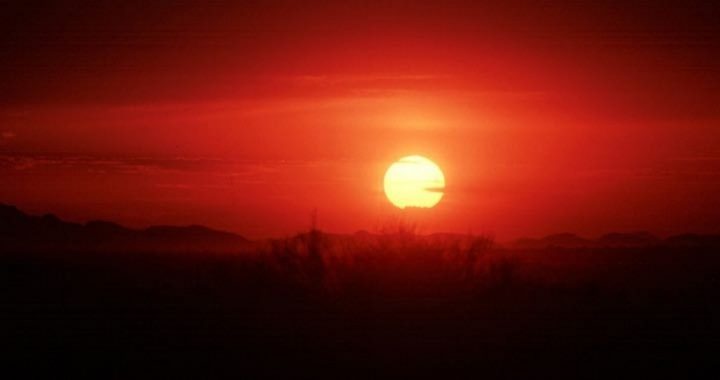
Scientists are again warning of impending climate calamity, but this time, it has nothing to do with carbon dioxide. In fact, man has nothing to do with it. This time, scientists at the University of California-San Diego are warning of a possible global cool down due to decrease in sun spot activity.
The study, entitled “Ultraviolet Flux Decrease Under a Grand Minimum from IUE Short-Wavelength Observation of Solar Analogs,” was published in Astrophysical Journal Letters and can be read here. The study predicts the sun will go through a “grand minimum” solar cycle by 2050, that will be even worse than the Maunder Minimum of the 17th century, which may have ushered in a period known as the Little Ice Age, during which decades of cooler than usual temperatures caused crop failures and intermittent famine in the Northern Hemisphere.
(The Maunder Minimum, and other climate-related subjects are covered in depth in a fascinating piece written by Ed Hiserodt in the January 22, edition of The New American.)
Led by physicist Dan Lubin, the team at UC-San Diego’s Center for Astrophysics and Space Sciences reviewed two decades worth of data gathered by the International Ultraviolet Explorer satellite mission. The team compared radiation from stars similar to the sun, identifying those that were experiencing minimums and concluded that our sun was coming into a less-active period. Lubin and his team calculate that sun spot activity could be as much as seven percent lower than normal minimum activity periods.
According to the study, reduced energy from the sun has a domino effect on the climate, beginning with a thinning of Earth’s ozone layer. That thinning changes the temperature in the stratosphere, which eventually affects the lower atmosphere, most notably wind and weather patterns.
Lubin stopped short of saying this was the end of global warming, however. According to the study, the effect of the predicted minimum will only be a fraction of the supposed warming caused by increased levels of CO2 in the atmosphere. The study believes that the decreased sun activity may slow down global warming, but not stop it. Lubin and his team do hope that this new information may improve the current climate models.
“Now we have a benchmark from which we can perform better climate model simulations,” Lubin said. “We can therefore have a better idea of how changes in solar UV radiation affect climate change.”
The UC-San Diego study isn’t only one that predicts much lower sun spot activity. At Northumbria University in Great Britain, Professor Valentina Zharkova and her team have analyzed magnetic waves emanating from the sun and concluded that, beginning in 2021, three successive 11-year sun cycles will be weaker than normal magnetically, causing a reduction in solar sun spot activity of nearly 60 percent. That study can be read here.
While the Northumbria study does not specifically mention climate change, it is reasonable to assume that the reduced sun spot activity — like the decreased activity during the Maunder Minimum — would have profound effects on the Earth’s climate. In fact, an earlier study of sun activity by the same group did predict an effect similar to the Maunder Minimum.
But Zharkova, too, stopped short of proclaiming an end to global warming — only a hiatus. “I hope global warming will be overridden by this effect, giving humankind and the Earth thirty years to sort out our pollution,” Zharkova said. “We have to be sorted out by that time and prepare everything on Earth for the next big solar activity.”
So, both the UC-San Diego and the Northumbria University studies warn of sun conditions similar to — if not worse than — the conditions during which the Little Ice Age occurred. But at the same time, they warn us that global warming will still be happening. It’s almost as if their funding was tied to a belief in anthropogenic global warming, isn’t it?
Photo: Clipart.com



